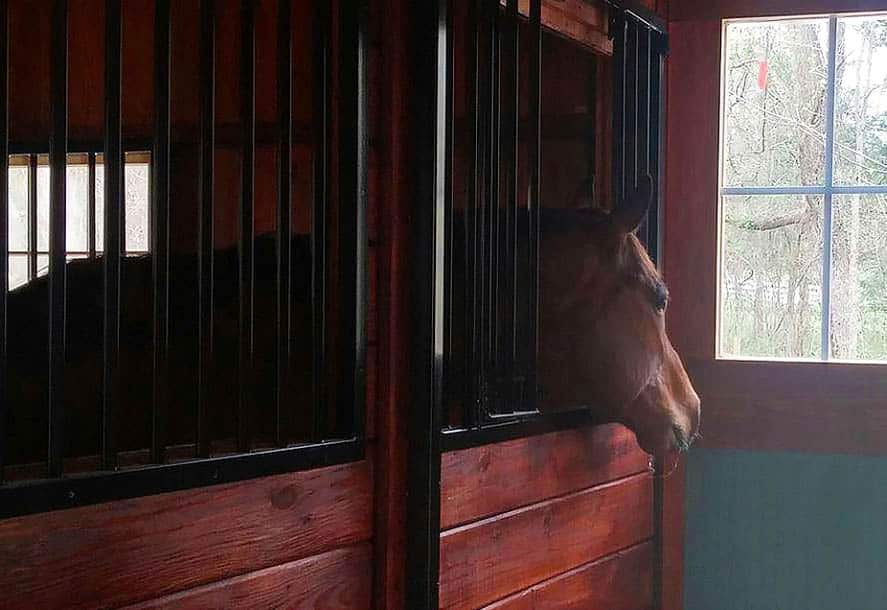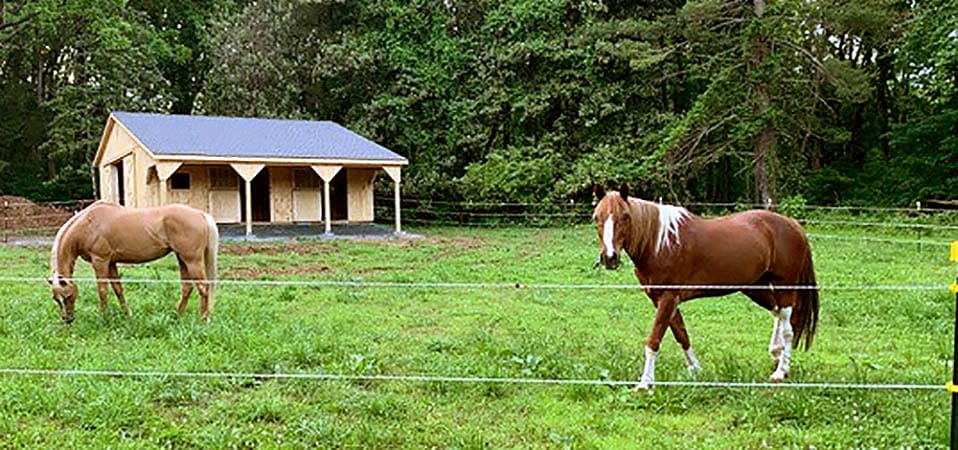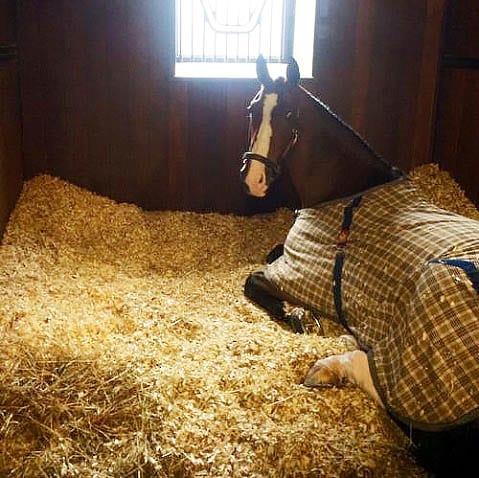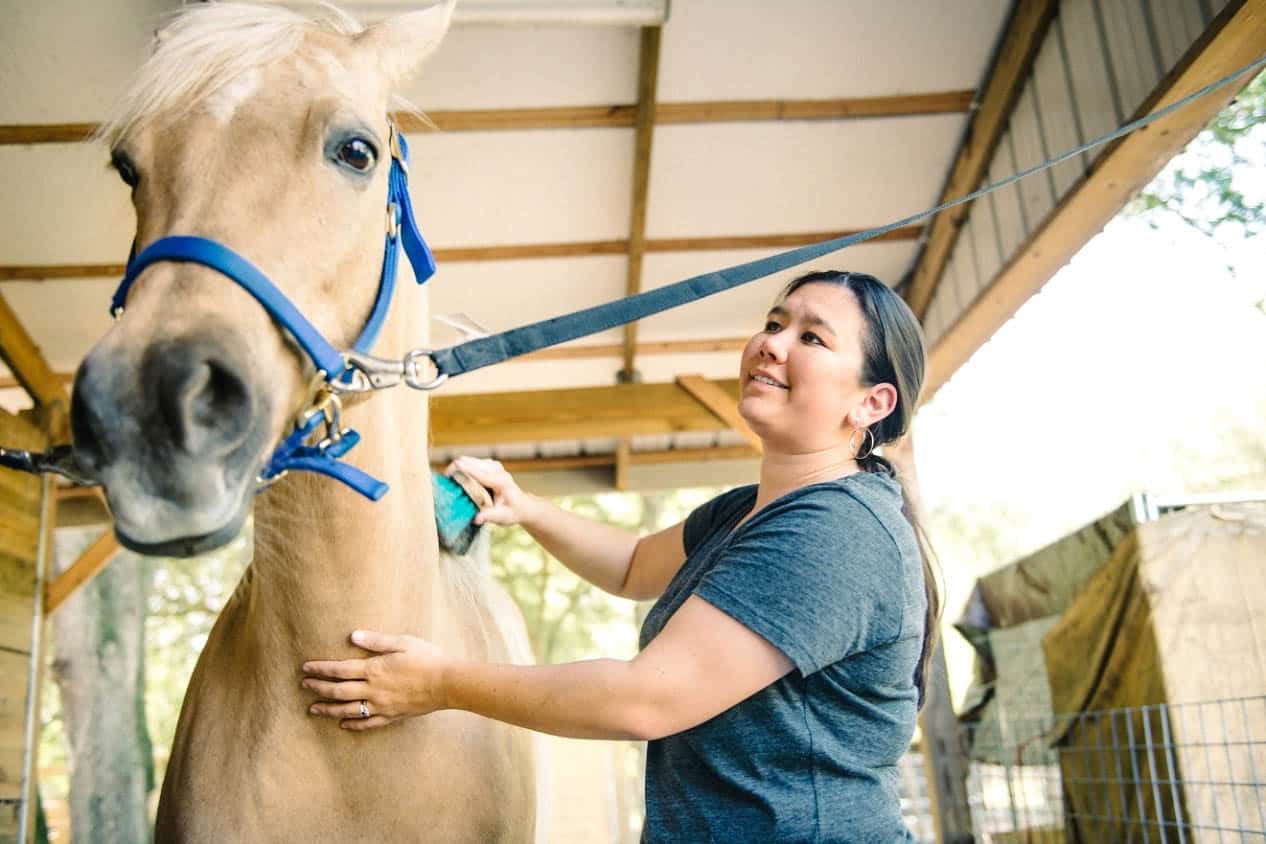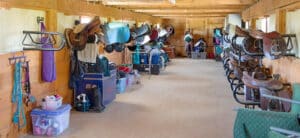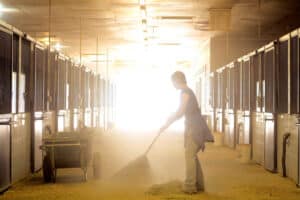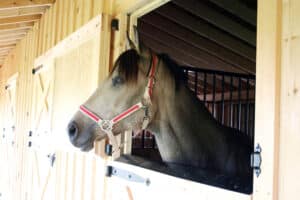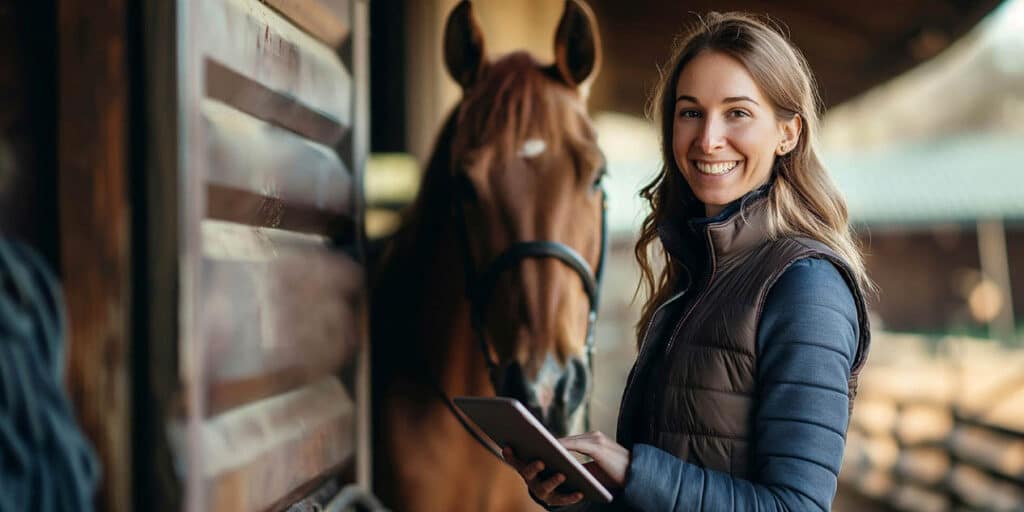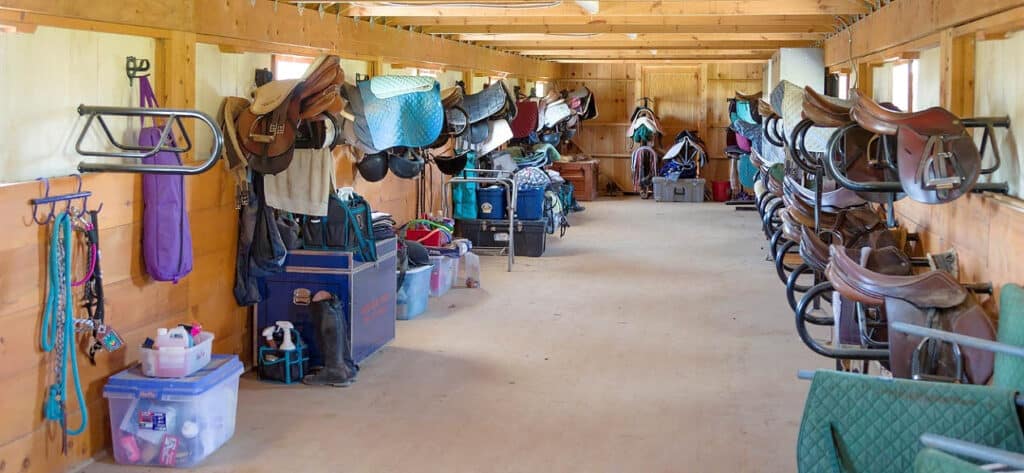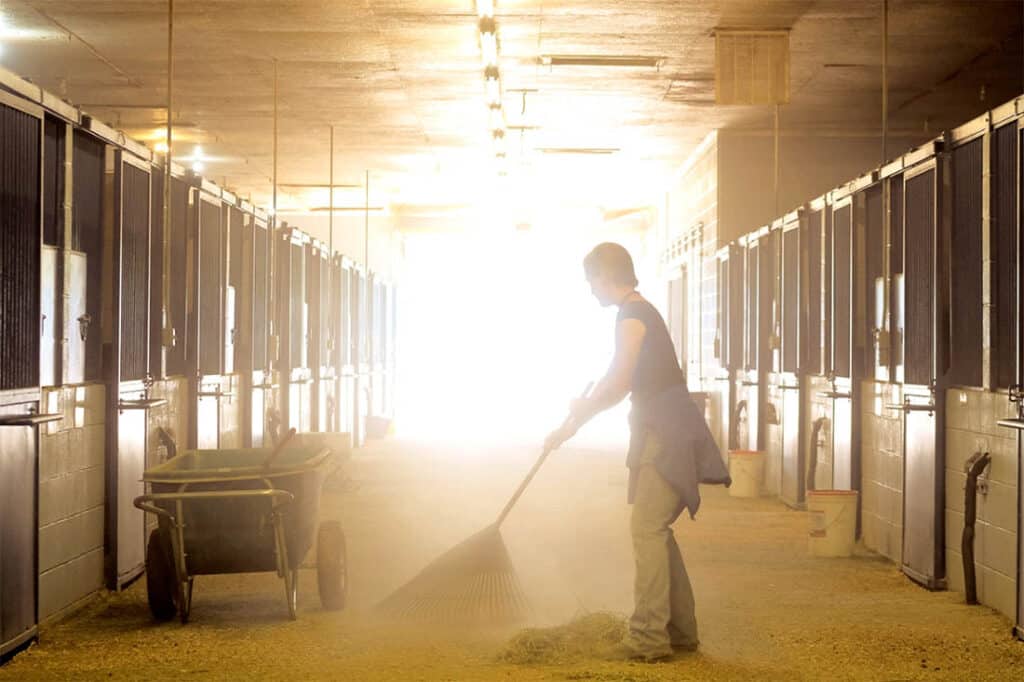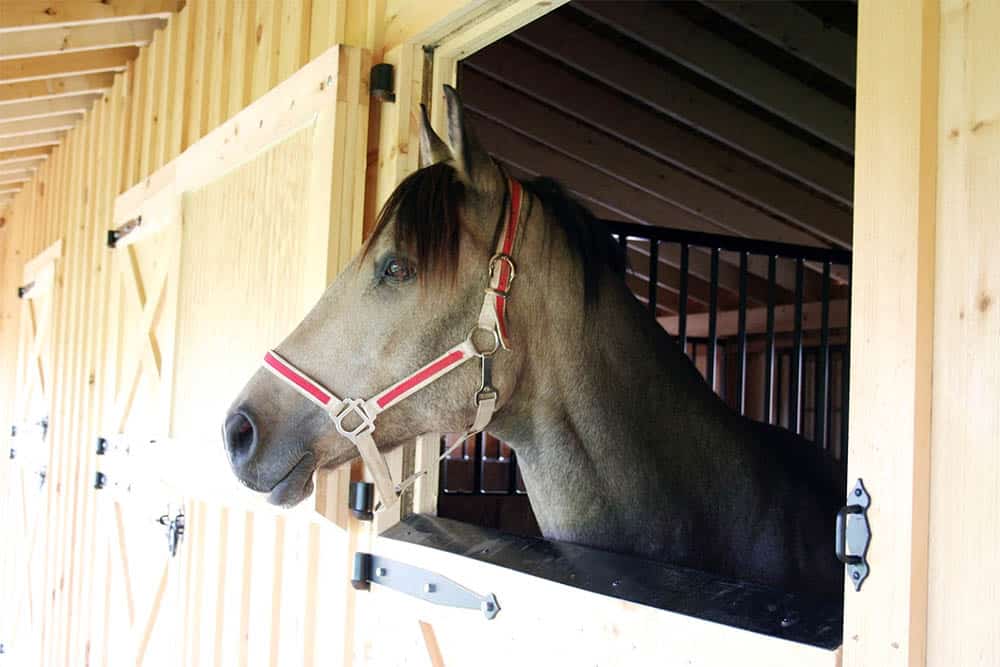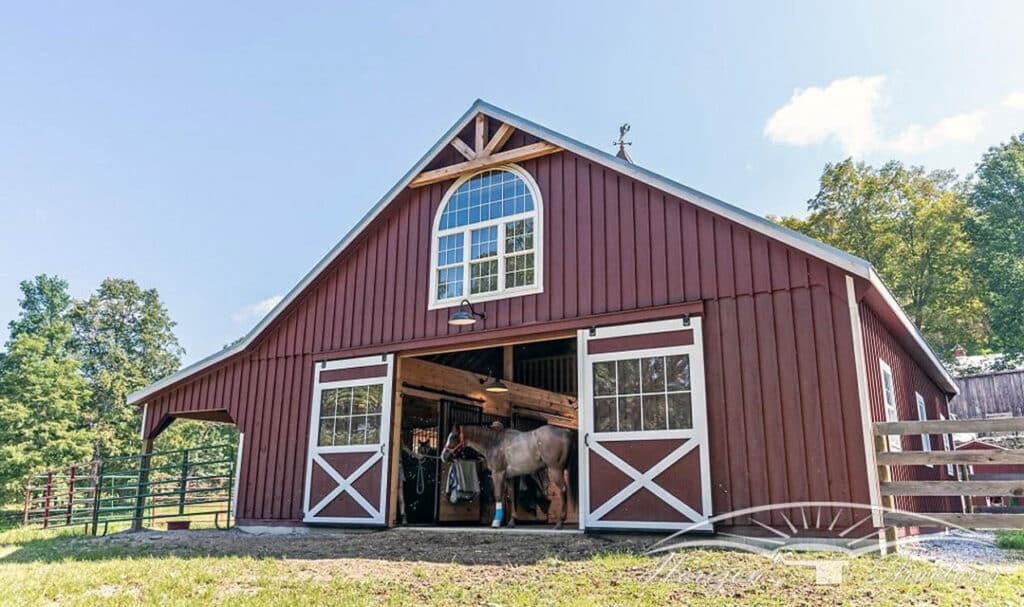An active horse is usually a happy horse. The tradition of tying equines in straight stalls after long workdays in the fields or of stabling horses 24/7 in box stalls with just an hour or so of under saddle or in hand exercise, is still part of modern-day horse management strategy. Across the world horse folks are realizing their horses would benefit from a different approach.
The horse’s nature as a flight animal, combined with his grazing habits and herd instincts would indicate that mirroring his natural environment as much as possible in horse farm designs would make sense. Huge pastures, large herds that habitually live together without interference and constant switching in/out herd members to the turnout areas, different habitats for them to freely explore with natural shelter options from which to choose as they see fit may be idyllic, but these options are not very practical.
Miniature versions of farm designs that seek to emulate the natural state from which the horse evolved are increasingly popular. There are claims that in order to survive horses really don’t need our help much (if at all). While aspects of these claims may be true, the domesticated horse has been bred and developed to an entirely different set of needs and requirements by his human partner and harnessing the noble beast as workhorse, transportation and now recreational pursuits has truly forever changed what a horse needs by nature.
There are times when confinement of a horse to a 12’ x 12’ space is needed for its own physical health benefit. Occasions such as rehabilitation and recovery from major surgeries or sustained injuries do require limited freedom of movement of the animal in order for certain healing processes to work. But the idea of placing a horse behind bars for long periods of time without relief is something all horse owners should take a second look at as horse management practice. Viewing the stable space from a horse’s point of view is something we understand better than ever before. Science has helped us shape that view and behavioral variances in horses notwithstanding, most horses do follow a general pattern that displays their likes and dislikes in how they live.
The Stable as a Sanctuary
It is easy for a reasonably educated horse person to understand that horses like to enjoy ‘the right to roam.’ Implementation of horse barn designs of one large indoor space with free access for the equine group to the great outdoors or offering horse herd turnouts with run-in sheds for shelter from the blistering hot sun in large pastures and amazing forage options, and all manner of variations of freedom of movement are all sensible ways to help defray a horse from becoming bored and keeping him active and socially engaged.
But if you’ve ever kept your pleasure horse, performance horse or other equine beasties at full turnout, without access to stabling where the stall door can be shut and the horse safely confined alone, then you also know that not having such shelter and stabling ability makes life very difficult. Direct interaction with the horse where this large animal is not in some way either restrained or contained is fine, until you want to do something it hasn’t yet decided it likes to have done to it or for it – even if that ‘thing’ is for its own good.
Of course you can train most horses to stand still and learn to pick up its feet for cleaning and inspection, shoeing or trimming, without tying it up (in fact, it is better to hold the horse on a halter with rope than tie it up anyway), or to accept the rider’s weight and saddle allowing it to walk off whenever it chooses. But is that truly a good idea? It’s not safe for the horse. It’s not safe for humans either.
It’s also harder for a horse to learn to focus on its training with a human when other horses are interfering. There is a higher risk of injury to the human caregiver if other horses are milling about when they are trying to evaluate an equine leg injury, listen to a horse heartbeat or gut sounds with a stethoscope or even groom a horse to clean it before tacking up, with other equines sticking their long noses into the business at hand.
Horses are not wild animals. And zookeeping a wild animal of any species is likely not quite the same as keeping the domesticated equine or pet cat or dog. Certain accommodations can and should be made to allow basic needs of the horse to be addressed. Consider utilizing the benefits of barn designs with Dutch doors installed on exterior stall walls that allow access to paddocks and pastures outside and install turnout spaces that allow some social interaction between horses while keeping them separate to avoid argument and injury if the need exists.
For some horses, especially those that have grown up with a bounty of human interaction and are well-used to spending some times of the day within a stall space, the stall can become a sanctuary.
Deeply bedded stable spaces offer comfort and warmth, the quiet barn offers security from predators and other ‘scary’ stuff like loud neighborhood activities such as firework displays, and shelter from extreme weather conditions that are dangerous to the horse such as lightning storms and hurricane force winds where flying debris or falling trees can cause injury.
Horses lower in the herd pecking order can enjoy some peace and quiet in the stable without being nervous about their equine colleagues constantly bamboozling them out of feed or water troughs or being bullied out of prime shade and shelter spots in the pasture.
Emotional stress issues can occur in horses for a myriad of reasons and keeping a good eye on how horses are interacting within a herd environment is essential. Some horses do simply need and prefer individual turnout.
Better Understanding
There are many examples of where humankind misunderstands horse behavior. For example, a horse that paces in its stall may be mistaken for a bored horse when in fact it is simply stressed missing its turnout buddies. It is important to identify the root cause of stress behavior a particular horse displays and to understand whether it is suffering with acute or chronic stress.
It is essential that as horse owners we don’t anthropomorphize their actions. And as they can’t read and we can, discovering the real reasons behind a horse’s behavior can be a revelation. However much we think we know as experienced equestrians and lifelong horse people, there truly is always more to learn. So yes, go ahead and pick up a book!
There are many horse care and management situations that require special attention. Horses that become food-anxious due to challenges they face or have previously faced in a herd-living environment, cribbing or wood-chewing habits, kicking stall walls, are just some of the habits that horses can develop that are all good cause for concern.
Alleviate Boredom
While keeping a horse stabled for part of the day may be a necessity for showground living, boarding barn options, or limited property size issues. If possible, take action to keep your horse occupied with frequent outings for workouts/schooling, handgrazing, or provide enriching activities (enriching meaning the horse has free choice of when he utilizes it) within the stall or paddock by offering horse safe toys.
Medical conditions such as the common equine gastric ulcer syndrome {EGUS}, colic, and many others can be prevented or remedially helped by providing the horse with constant supply of forage from which to ‘graze.’ Slow-feeder hay nets that are safely hung and secured can help mimic the grazing activity a free roaming horse would enjoy, if not the variety of forage and walking activity it would benefit from in the pasture.
Do Your Best
At the end of the day, we all want to do the best we can for our horses and just because our equines have to spend a portion of their day behind bars, it doesn’t mean they are being ill-kept, or we should feel badly about their confinement.
There is something truly wonderful about setting up a stall bed with masses of straw on a cold winter’s night or hot summer day and bringing your horse inside. There is sincere relief when you are tucked up in your own bed at night and hear fireworks explode outside with the whizz of rockets in the sky and know your horse(s) are all safely ensconced in their stables, secure and happy.
Equine health professionals appreciate you having your critters clean and dry, with legs mud-free, hooves picked out, settled and calm in a safe stall environment awaiting their arrival and examination.
And horses do like to be groomed, handled, and generally interacted with one-on-one with a human rather than another horse.
Most people cannot afford to knock down their horse barn and start over with a new design, or reconstruct all their footing in paddocks, fencing and farm set up to facilitate book examples of layouts and special plans.
Doing your best begins with being educated about your horse’s needs and being observant of his behaviors. Make sure you understand the root cause of any stressful behaviors. Then make reasonable accommodations to your horse’s lifestyle where you are able to do so.
CLICK HERE to Download Our Barn Catalog & Price List!


